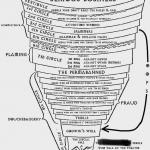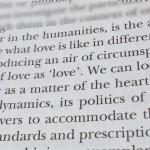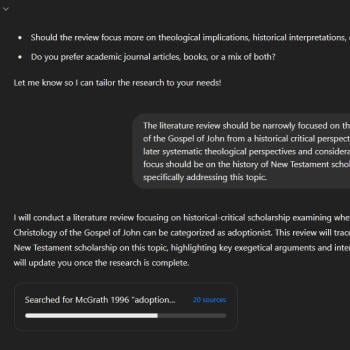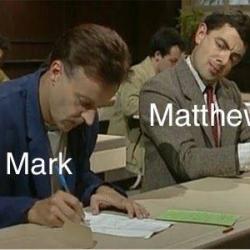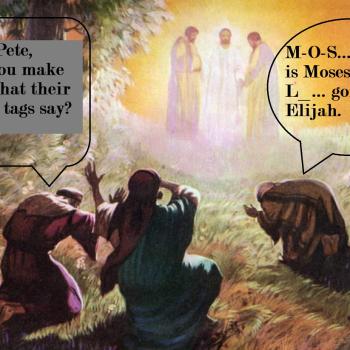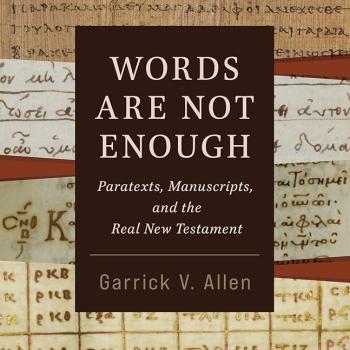I really enjoyed learning from student blog posts not only what they are finding engaging in my class on the Bible and music, but also what they are finding frustrating. One example of the latter was my mentioning in passing of historical questions, doubts, and debates related to the stories of the crucifixion of Jesus as found in the Gospels. I found the student’s blog post about this interesting because it stemmed from the student’s Catholic faith, and yet Catholicism on the whole is fairly open about the results of academic historical study of the Bible and the challenges this raises to the historicity of various details, in a manner that – if it reached ordinary Catholics – could eliminate such objections, which more naturally reflect the approach of conservative Protestantism.
I don’t want to focus on a historical approach to the Bible in and of itself in this class, since that is more of a distraction from the intersection of the Bible and music than something directly relevant to it. But on the other hand, musical settings and cinematic portrayals lead naturally to engagement with questions of historicity from a different angle, highlighting the role of storytellers of all sorts as artists. Getting students to think about the Gospel authors as artists, as creative writers even when writing about historical events, was a fantastic opportunity to approach students’ discomfort with historical questions about the Bible from a different angle.
And so, as a class activity, I broke students up into groups and asked them to write up filmmaker’s (and composer’s) notes for one scene from the Bible. Since we had recently been talking about settings of the passion, I suggested that the crucifixion story be the default choice, but that anything else within the Bible is also fine. In our conversation after class, we talked about their choices about what sources to draw on, what to add or leave out, what music would accompany the scene, how many extras would be needed, wide angle vs. zoom, and a variety of other matters. I related this to the Gospels, in particular highlighting the Gospel of John’s explicit statement that the author didn’t try to include everything, but selected material for a purpose.
I then shared these two renditions of the story of Jesus’ encounter with Nicodemus, the second of which (from the Lumo Project) speaks explicitly about the filmmakers’ choices, and the lack of “stage directions” in the Gospels.
I have blogged about the Lumo Project and its movies before. I have yet to manage to get hold of copies and watch them in their entirety. But I am extremely grateful for the featurette about this particular scene, as it was perfect for use in my class.
What do you think of this activity? Do you ever use movies and/or musical settings as a way to get students to engage with questions about biblical literature and history from a different angle?


